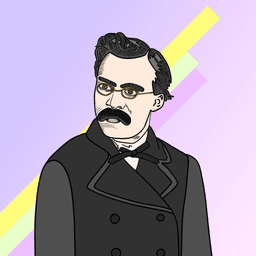Accusative Case in German
German noun cases are one of the most confusing topics for beginners. Here is a guide & overview, to help you master them from the start.

- What is the accusative case?
- How do you form the accusative case? (what words change, and how) Nouns Articles
- How can you identify that an accusative case is needed? Direction & Movement Time
- Special Cases & Misc Questions and Negations
- What are some pitfalls
The accusative case contrasts with the nominative case: While the nominative case is used for the subject of a sentence, the accusative case is used for the object:
In this sentence, the boy (Der Junge) does something (throwing the ball).
| Case | Explanation | Example |
|---|---|---|
| Nominative | action creator | der Junge |
| Accusative | action receiver | den Ball |
So, in this sentence, the ball is the object because it is being thrown.
Notice that, in English, this doesn't matter: You can say "The boy throws the ball" or "The ball throws the boy". In both cases, it's the boy and the ball - it's just the position in the sentence that changes.
In German, this is very different. In German, nouns change their form depending on what role they play in a sentence. When the ball is the originator of the action, it will be in the nominative case, whereas it will be in the accusative case as the receiver of the action.
What is the Accusative case?
The Accusative case in German plays a pivotal role in sentence structure, acting as the direct object—the receiver of the action performed by the subject. Understanding its function is crucial for constructing coherent and grammatically correct sentences.
In German, the Accusative case is often used after certain verbs and prepositions. It is the case that answers the question "whom?" or "what?" in relation to the verb:
Here, 'den Hund' (the dog) is in the Accusative case as it is the direct object receiving the action of seeing.
Another key function of the Accusative case is to show movement towards something:
In this sentence, 'in den Park' indicates movement towards the park, which is why 'Park' is in the Accusative case.
How do you form the accusative case?
When a noun changes its case, everything related to that noun will also change its case. The article (der, die, das) and related adjectives & adverbs will all change their case, to align with the noun:
Articles In The Accusative Case
Nouns in the German Accusative case undergo changes depending on their gender and number.
| Noun Gender | Definite Article (Nominative) | Definite Article (Accusative) |
|---|---|---|
| Masculine | der | den |
| Feminine | die | die |
| Neuter | das | das |
Masculine Articles
For masculine nouns, the definite article 'der' changes to 'den', and the indefinite article 'ein' changes to 'einen'. Consider the masculine noun der Ball (or ein Ball in its indefinite form). Let's see how the definite & indefinite articles change, once it's put into the Accusative case:
I am throwing the ball.
I am throwing a ball.
Feminine, Neuter, and Plural Articles
Now, the good news: Feminine, neuter, and plural nouns remain largely unchanged in the Accusative case. The definite articles 'die' (feminine) and 'das' (neuter) remain the same, and the plural article 'die' also remains unchanged:
I see the woman.
I am buying the house.
I know the children.
Accusative Nouns & Noun Endings
Accusative Pronouns
Pronouns in German change form when used in the Accusative case. This is crucial for accurate sentence construction and clear communication. The primary personal pronouns in the Accusative case are:
I see him.
She helps me.
This table shows the changes in personal pronouns:
| Pronoun | Nominative | Accusative |
|---|---|---|
| I | ich | mich |
| you (singular informal) | du | dich |
| he | er | ihn |
| she | sie | sie |
| it | es | es |
| we | wir | uns |
| you (plural informal) | ihr | euch |
| they | sie | sie |
| you (formal) | Sie | Sie |
Accusative Adjectives
Adjectives in German change their endings based on the case, gender, number, and definiteness of the noun they modify. In the Accusative case, these endings are particularly important for masculine nouns.
For example:
In this sentence, 'alten' is the Accusative form of 'alt' (old), used before a masculine noun ('Mann'). The table below illustrates the adjective endings in the Accusative case:
| Gender/Number | Definite Article | Indefinite/No Article |
|---|---|---|
| Masculine | -en (den alten Mann) | -en (einen alten Mann) |
| Feminine | -e (die alte Frau) | -e (eine alte Frau) |
| Neuter | -e (das alte Haus) | -es (ein altes Haus) |
| Plural | -en (die alten Leute) | -en (alte Leute) |
Correctly using these adjective endings is crucial for accurate and fluent German communication.
When to use the accusative case in German?
Now let's explore when exactly to use the accusative case in German.
Accusative Verbs
Certain German verbs always require their objects to be in the Accusative case. Recognizing and correctly using these verbs is fundamental for fluent German communication. Some common verbs that always use the Accusative case include sehen (to see), haben (to have), and lieben (to love).
For example:
In this sentence, 'einen Hund' (a dog) is the direct object in the Accusative case.
Additionally, some verbs can take two objects - one in the Accusative and the other in the Dative case. These dual-case verbs include geben (to give) and schicken (to send). For instance:
Here, 'das Buch' (the book) is in the Accusative case, while 'dem Mann' (the man) is in the Dative case.
Accusative Prepositions
Prepositions in German dictate the case of the nouns or pronouns they accompany. Some prepositions are exclusively used with the Accusative case, such as durch (through), für (for), gegen (against), and ohne (without). For example:
In this sentence, 'den Park' (the park) is in the Accusative case, following the preposition 'durch'.
There are also dual prepositions, which can be used with either the Accusative or Dative case, depending on the context of movement (Accusative) or location (Dative). These include an (on), auf (on), hinter (behind), in (in), neben (next to), über (over), unter (under), vor (in front of), and zwischen (between).
For instance:
Time Expressions in the Accusative Case
The Accusative case is also used in German to express durations or lengths of time. This is a unique aspect of the Accusative case, setting it apart from other cases.
For instance:
Here, 'zwei Wochen' (two weeks) is a time expression in the Accusative case. It indicates the duration of the action. Time expressions in the Accusative case do not require prepositions, which makes them easy to identify.
Another example:
'Den ganzen Tag' (the whole day) is another example of a time expression in the Accusative case, indicating the time span of the action.
Accusative Case in Questions and Negations
The Accusative case retains its function in questions and negations, making it a consistent element in German sentence structure.
In questions, the Accusative case can be identified by the object of the inquiry. For example:
Here, 'den Mann' (the man) is the direct object in the Accusative case. In negations, the Accusative object remains unchanged, even when the sentence is negated. For instance:
The object 'den Mann' stays in the Accusative case despite the negation.
Common Mistakes and How to Avoid Them
When learning the Accusative case, students often make certain mistakes. Common ones include:
- Confusing the Accusative with the Nominative case, especially for masculine nouns.
- Using the wrong articles or adjective endings for Accusative objects.
- Misidentifying the direct object in a sentence.
To avoid these mistakes, practice identifying the direct object in sentences and remember the changes in articles and adjective endings for the Accusative case.
Frequently Asked Questions
-
When do I use the Accusative case in German?
- The Accusative case is used for direct objects, certain prepositions, and time expressions.
-
How do I know if a noun is in the Accusative case?
- Look for the direct object in a sentence, the noun that receives the action of the verb. Also, check for changes in articles (especially for masculine nouns).
-
Do all prepositions require the Accusative case?
- No, some prepositions require the Dative case, and some can be used with both cases, depending on the context.
By understanding these distinctions and common pitfalls, learners can improve their mastery of the German Accusative case.




